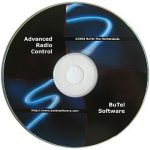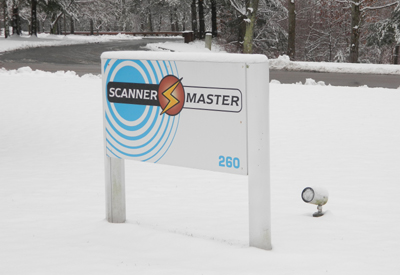One question we get all the time here at ScannerMaster Intergalactic World Headquarters is “when I put my ZIP Code in my (HomePatrol, 436 or 536) scanner how do I hear something in the next ZIP Code over?” The answer is that you already are… Let me explain.
On the Uniden ZIP Code type scanners (Home Patrol, BCD436HP and BCD536HP) when using the ZIP Code method of scanning (versus using Favorites Lists) you enter your local ZIP Code into the “Location” menu. You then can set the range (in miles). The ZIP Code acts as a center point on a map. The range is how big a circle that is drawn around the center point of the ZIP Code. More miles equals a bigger circle; a bigger circle equals more stuff programmed into your radio.
So if you live in Mayberry and your ZIP Code is 27031 you would enter it in the scanner. You then set a range; let’s say 15 miles. Draw a circle 15 miles in any direction from the center point of the ZIP Code and that is your primary coverage area. When the radio loads up it will load all the channels that are in that area, based on the service codes you enabled. Simple, right? Well, not so much.
The way the HomePatrol Database is constructed is that each entry itself also has a geographic location assigned to it with a range. So the various entries in the database all have their own circles. If any of these circles touches or crosses your circle then they will be entered into your scanner. For this reason you may hear things that are actually outside your circle.
Let’s say that Mt. Pilot is 20 miles from Mayberry, where you are. If you set your range to 10 miles you may not expect to hear Mt. Pilot. In the database however the Mt. Pilot stations are set to a range of 15 miles. So the Mt. Pilot circle goes out 15 miles and crosses the 10-mile circle you set in Mayberry. Therefore you will have the Mt. Pilot channels in your scanner. Clear as mud, right? Well wait, it gets even weirder!
So, you see Mt. Pilot’s frequencies on your radio but you never hear them. Why is that? Your range is set to include them and they show up but the radio doesn’t stop on them. There are a couple possible answers:
The first reason may be that they are too far away. Just because they are within the range settings of the radio doesn’t mean your scanner will actually be able to hear them. Perhaps sometimes you can hear them and other times not. Radio signals are predictably unpredictable.
Systems are designed to reliably cover specific areas. When you are within those areas your scanner should be able to hear them all the time. When you are outside the main coverage area it all depends on things like elevation (yours and the transmitters), terrain, obstructions, distance and sometimes even the weather. If there is a mountain between you and them you may not hear them. If you cannot hear them you might want to try a taller antenna, but that is a post for a different day. A good rule of thumb is that if the agency’s radios work where you are your scanner should as well.
Another reason might include the database being wrong. The HomePatrol Database is derived from the database at RadioReference.com. This is maintained by scanner enthusiasts all around the world. Some areas are better covered than others. If there are a lot of dedicated scanner users in the area the database is liable to be more accurate.
Still another reason might be that your scanner is not capable of hearing the type of signals used.
Whistler ZIP Code scanners work differently. You select a location and the radio offers a set of systems and channels to enter into a ScanList. The same thing applies for distance however; you may not hear something that is closer than others due to obstructions, low antennas or power.
If this is all too confusing for you then have ScannerMaster perform its “Setup and Optimize” service on your scanner. We will set up Favorites Lists for your county or counties so you will only have the items programmed into your scanner that you really want!




